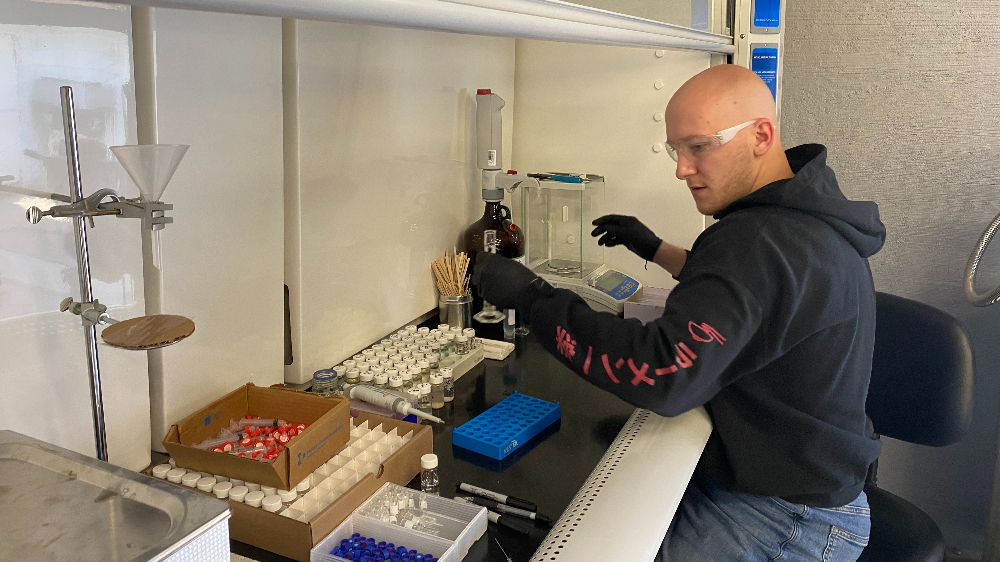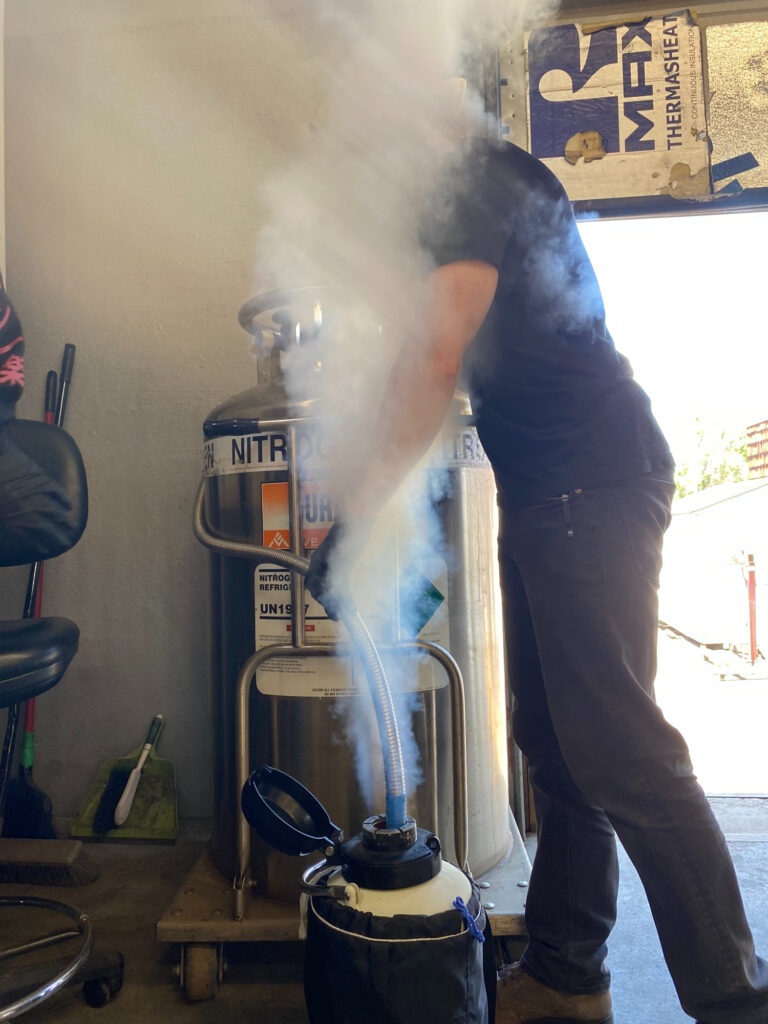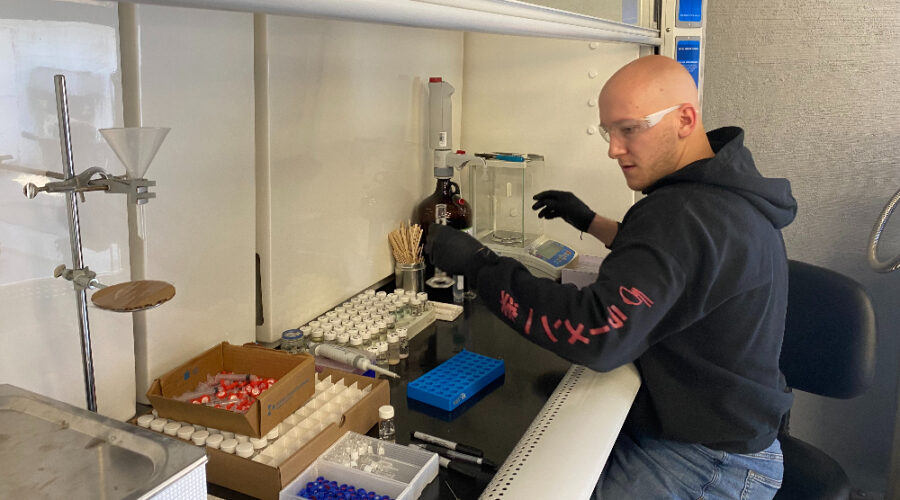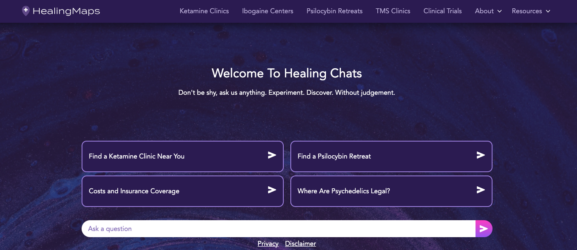Mushroom-Testing Labs Find Huge Differences in Psilocybin and Other Compounds
The shrooms are going under the microscope. Or–under liquid chromatography. And the results are surprising, with the mushroom testing showing huge differences between mushrooms.
In a row of warehouses in a nondescript industrial corner of Denver, the hard science of analytical chemistry is colliding with the good vibrations of psilocybin.
“There’s a ton of experience that goes into something like this. A lot of it is trial and error, but it’s just a lot of chemistry too,” says Colton Brook, lab manager at Altitude Consulting.
As psilocybin-containing mushrooms become more accepted and less illegal, an increasing number of laboratories are willing to test the chemical contents of your shrooms.
Using high-performance liquid chromatography, the small team of chemists at Altitude Consulting can test samples for about a dozen compounds in psychedelic mushrooms. A machine hits samples with UV light. Reading the absorption of that light yields a detailed readout of the compounds.
Brook says the lab is doing more than 100 individual tests every month. This can be a godsend for users. The main compound people are interested in is psilocybin. Brook says that potencies of the mushrooms ranged between .4 percent psilocybin content all the way to 1.5 percent.
“It’s a big range,” he warns. For those taking large amounts, that seemingly small difference can have serious ramifications. “It could be the difference between getting 12 milligrams or 14 milligrams all the way up to 50 or 60 milligrams [in the same amount of mushrooms].”
Mushrooms that are stronger than you figured can disorient and confuse you. If you’re not with a trained sitter in a safe place, this bewilderment can lead down dark roads.
RELATED: Everything You Need to Become a Psychedelic Therapist or Coach
Brook attributes this range of potencies to differences in mushroom varieties, storage method, and environmental factors like exposure to heat.
Ultimately, this process is about equipping consumers with the most accurate information possible. “We just want to be able to give numbers to people,” says Brook.
Exciting news: Two states have legalized psilocybin therapy for the first time ever. Click here to get on the waiting list for Oregon psilocybin therapy. And click here to get on the waiting list for Colorado psilocybin therapy.

Decriminalization Leads to More Mushroom Grows
Altitude Consulting was founded in 2019 to test the cannabinoid content of hemp. In other words, to figure out how much THC was in cannabis sativa.
Then, the laws morphed around psychedelics. About 20 cities, counties and states have decriminalized or legalized some psychedelics, including ayahuasca, San Pedro, and iboga.
As decriminalization and legalization continues, other cities have set up labs to test the compounds in psychedelics. Hyphae Labs in Oakland tests mushrooms for its Psilocybin Cub. Rose City Laboratories in Portland tests mushrooms for the state’s above-ground trips. A place called Alkemist Labs in Los Angeles says it’s testing psychedelics for all kinds of compounds.
| Lab name | Location | An Overview |
| Hyphae | Oakland, CA | BIPOC-owned, curators of the Psilocybin Cup |
| Rose City | Portland, OR | Testing samples for Oregon’s above-ground program |
| Alkemist Labs | Los Angeles, CA | Has DEA schedule 1 license to legally test controlled substances |
| Altitude Consulting | Denver, CO | Can turnaround results in 48 hours |
RELATED: These are the 10 Most Potent Magic Mushroom Strains
Sibling Molecules
Many users concentrate on testing their mushrooms for psilocybin and psilocin, since those are the molecules that can knock your socks off. But mushrooms are complicated beings; they’re as much like animals as they are like plants. It’s important to consider the whole picture, some enthusiasts say. So the lab tests for:
- Aeruginascin
- One study said this compound “seems to modify the pharmacological action of psilocybin to give an always euphoric mood during ingestion of the mushrooms.”
- Baeocystin
- A precursor compound to psilocybin. Paul Stamets reports that baeocystin, taken on its own, has a sedative effect. Other users say baeocystin, when taken on its own, does nothing at all.
“There are compounds that aren’t active on their own, but when you combine them with psilocybin, there may be an entourage effect,” says Travis Tyler Fluck, an award-winning mushroom grower and educator. “The mushrooms explained it like this to [my friend]: you can take the psilocybin alone, but it’s like playing a little kid’s keyboard, like My First Piano. But if you take the whole mushroom, with all its other compounds, it’s like the whole symphony.”
RELATED: Do Shrooms Show Up on a Drug Test?
RELATED: These are the 6 Best Mushrooms Growing Kits
As psychedelics head into the mainstream, it seems likely that testing will become ever more important. Not only to know how strong your mushrooms are, but to learn about the potentially helpful compounds beyond the famous ones.

READ NEXT: Pet and Setting: This Psychedelic Vet Teaches Dogs to Trip Sit



